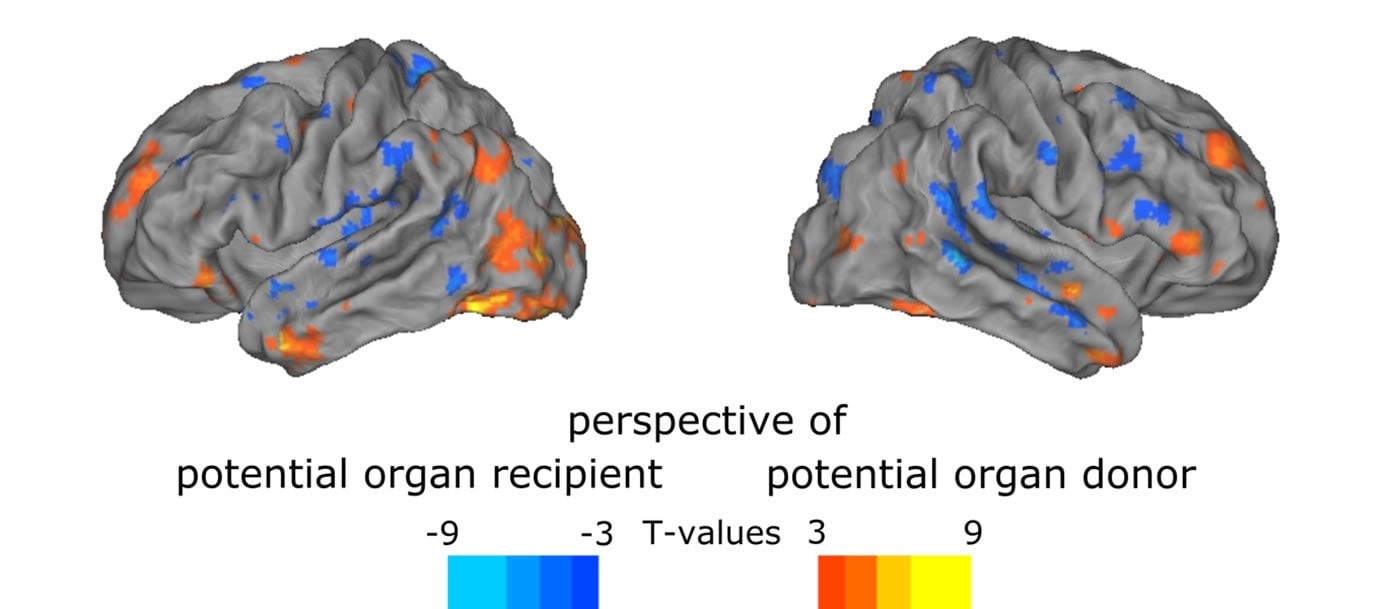Summary: Using scenes from movies, researchers discover how different brain areas can be used flexibly and as needed. The study sheds light on how the brain transitions between moral thinking and empathy.
Source: Aalto University
Social neuroscience researchers investigated the effects of similarity by showing subjects the film My Sister’s Keeper and asking them to watch the film from either the perspective of the donor sister or the sick sister. The subjects’ brain processing was measured by functional MRI, and at the same time eye tracking was carried out, monitoring where the subject’s eyes were looking on the screen.
‘Understanding another person’s point of view is important to reach consensus. It can reduce prejudices and facilitate the development of empathy. We wanted to find out how taking and changing perspective is reflected in brain activity and eye movement,’ said Postdoctoral Researcher Mareike Bacha-Trams.
The study involved 30 women who were shown a 25-minute clip from the film My Sister’s Keeper, and who were asked to observe the film from different perspectives. There is a moral conflict in the film where Anna refuses to donate an organ to her sister Kate who has cancer.
At the beginning of the film, the researchers told the subjects that the sisters were either biological siblings or that the younger sister had been adopted into the family as a baby.
‘When the subject watched the film from the perspective of the organ donor sister, this activated the brain areas where moral thinking occurs. When the viewer watched the clip from the perspective of the sick sister, more of the brain areas were activated which have been found to be involved in empathy and sympathy. Different areas of the brain can be used flexibly as needed,’ said Professor Iiro Jääskeläinen.

The viewer’s assumption on whether the potential organ donor and the sick sister were biological siblings confirmed the differences in brain activation and eye analysis between different perspectives.
‘Based on the eye tracking analysis, it was found that when the subject watches the film from the perspective of the potential organ donor, they look more at both protagonists than the subject who has been following the film from the sick sister’s point of view,’ Mareike Bacha-Trams said.
At the same time, all subjects looked more at the sick sister than the donor sister.
‘The sick sister is the object of compassion. Following her gestures, facial expressions and body language generated empathy,’ Mareike Bacha-Trams added.
Mareike Bacha-Trams has recently received Marie Skłodowska-Curie funding and a Kone Foundation grant for her research. Each grant is for three years. This summer, Dr Bacha-Trams will transfer to a researcher position at the University of Helsinki, and as part of her studies intends to research fake news from a neuroscience perspective. Dr Bacha-Trams will also continue to study social neuroscience. The next study will look at who the subject would save when they have to choose between two faces, and one has been made to resemble themselves.
About this neuroscience research article
Source:
Aalto University
Media Contacts:
Mareike Bacha-Trams – Aalto University
Image Source:
The image is credited to Mareike Bacha-Trams.
Original Research: Open access
“Social perspective-taking shapes brain hemodynamic activity and eye movements during movie viewing”. by Mareike Bacha-Trams, Elisa Ryyppö, Enrico Glerean, Mikko Sams, Iiro P Jääskeläinen.
Social Cognitive and Affective Neuroscience doi:10.1093/scan/nsaa033
Abstract
Social perspective-taking shapes brain hemodynamic activity and eye movements during movie viewing
Putting oneself into the shoes of others is an important aspect of social cognition. We measured brain hemodynamic activity and eye-gaze patterns while participants were viewing a shortened version of the movie ‘My Sister’s Keeper’ from two perspectives: that of a potential organ donor, who violates moral norms by refusing to donate her kidney, and that of a potential organ recipient, who suffers in pain. Inter-subject correlation (ISC) of brain activity was significantly higher during the potential organ donor’s perspective in dorsolateral and inferior prefrontal, lateral and inferior occipital, and inferior–anterior temporal areas. In the reverse contrast, stronger ISC was observed in superior temporal, posterior frontal and anterior parietal areas. Eye-gaze analysis showed higher proportion of fixations on the potential organ recipient during both perspectives. Taken together, these results suggest that during social perspective-taking different brain areas can be flexibly recruited depending on the nature of the perspective that is taken.
Feel Free To Share This Neuroscience News.






